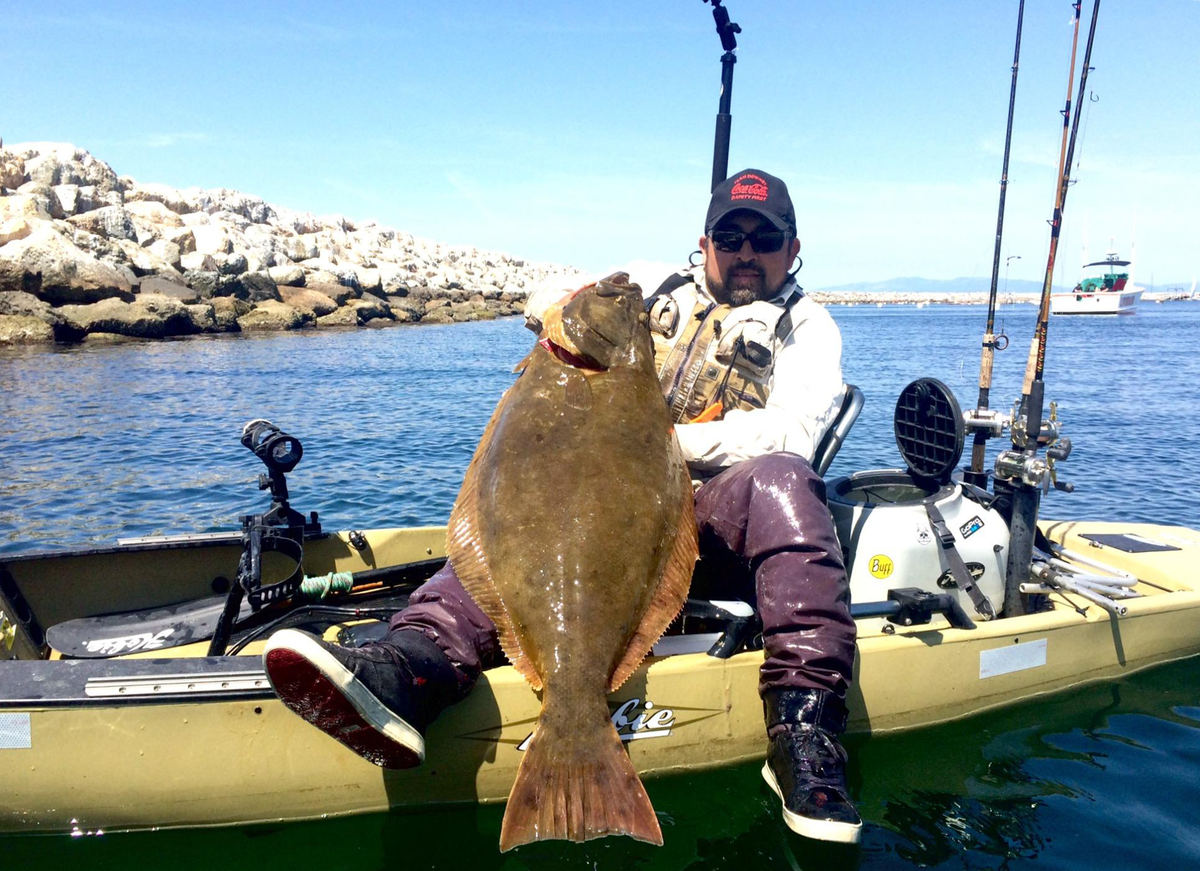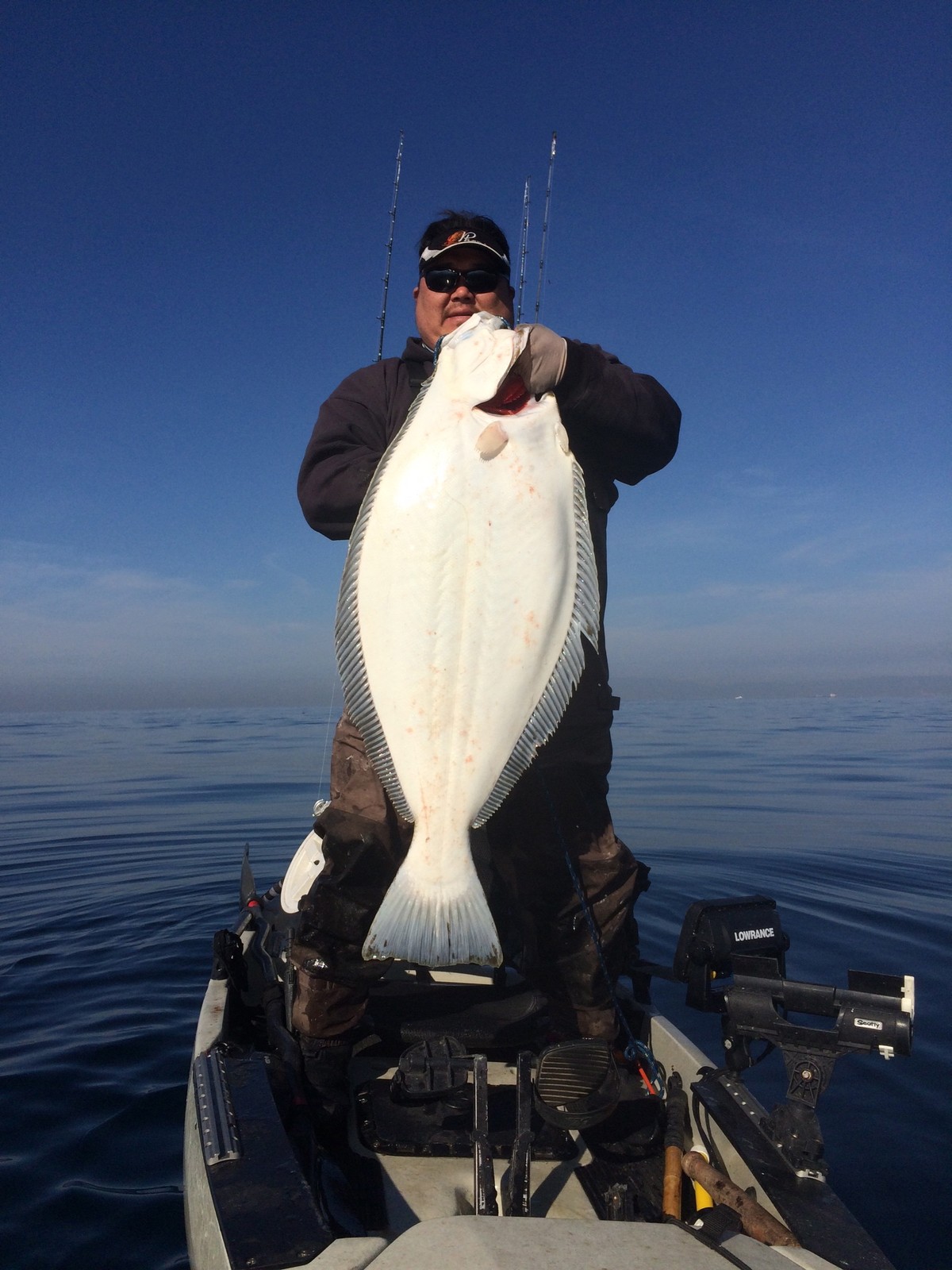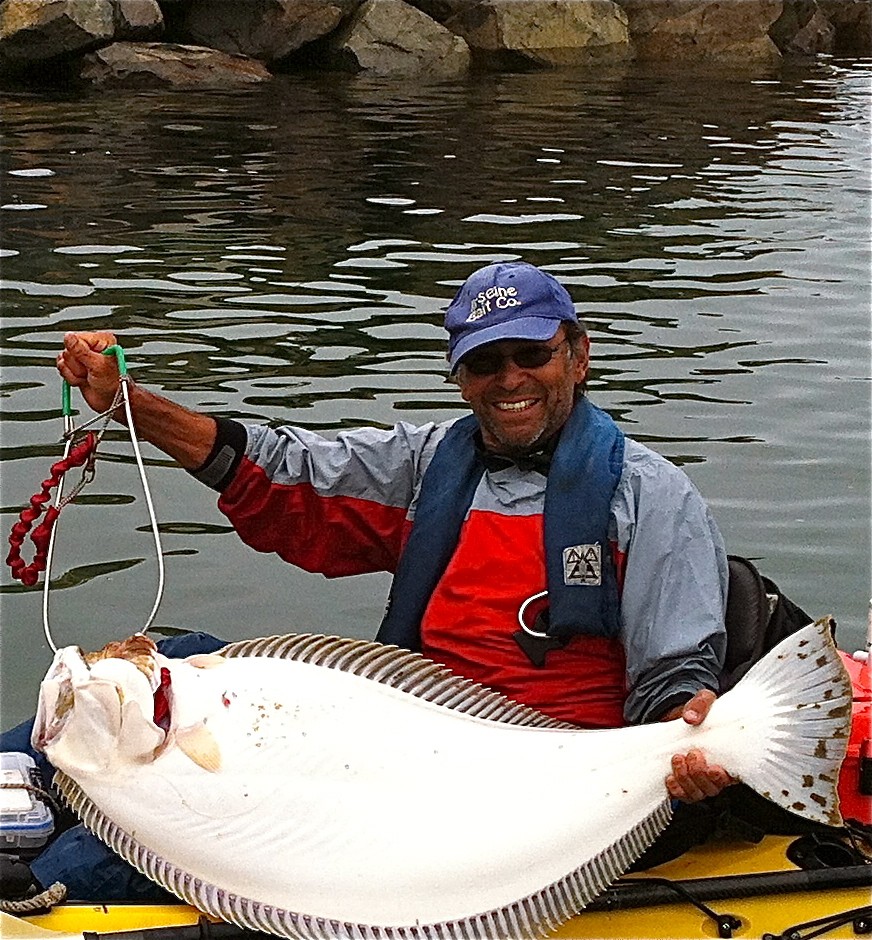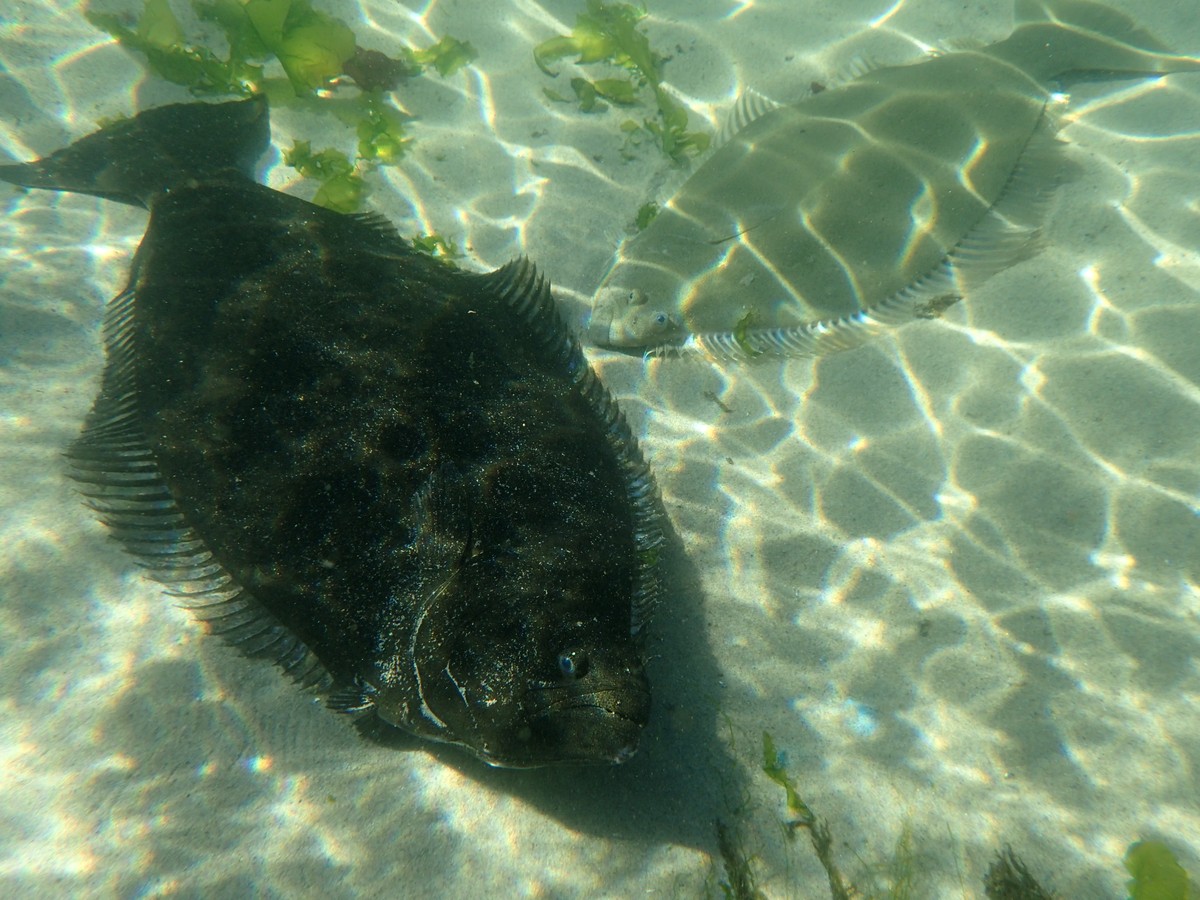
The affectionately and jokingly named Team Sewer has generously offered up a few tips and tricks on how they have dominated the competition up and down the Southern California coast when it comes to catching trophy California halibut from Hobie kayaks.
These guys know their stuff. Tony Park won the decades-old Marina Del Rey Halibut Derby last summer. Jorge Villegas took top honors in the season-long Western Outdoor News tournament. To win these impressive achievements, they beat powerboats of all sizes.
BAIT:
Big bait, big fish is an axiom not wasted on trophy halibut. Most big fish are caught on an 8- to 14-inch live greenback mackerel, although any hungry halibut will eat a live sardine or squid when it’s presented properly. Jorge’s tournament winner was caught on, of all baits, a lowly lizardfish. It proves the halibut is an opportunistic ambush feeder and will prey on anything placed in front of those lurking eyes.

RIGGING:
When fishing live bait, most serious halibut anglers use a trap rig. The traditional trap rig is a snelled single hook tied about six inches above a treble hook. I like the octopus style hook with the offset eye but the Team prefers a circle or J hook. The single hook is placed through the nose of the bait then the treble is set near the tail or anal cavity of the bait, or in the case of a live squid, the treble is hooked between the eyes by the tentacles.
This leader is usually about 24 to 36 inches long and is tied to a three-way swivel, along with the main line. An additional 12 inches of leader is attached to the swivel with a torpedo or ball type lead weight at the end. Your choice of lead can vary from a 6- to 12-ounce weight. The amount of weight used will depend on how windy the conditions are, your speed of drift, and the size of the bait you’ve caught. Drop shot and dropper loop rigging also work well and both keep the bait in the bite zone.
There are two important tips to remember when fishing live baits. First, your weight should be heavy enough to maintain contact with the sand and bounce along while creating an attention getting cloud while you’re drifting. Secondly, the bait should be moving about 1 to 3 feet above the sea floor so that the halibut can see the bait.
Halibut are very strange creatures. They are born like all fish with an eye on either side of their bodies. As the fish grows older, one eye migrates next to the other and the fish ends up with both eyes on one side of its body. The eyes are now on the top of the fish and this topside is usually colored a shade of brown with numerous spots. The underside of a California halibut is pure white and there are both right eyed and left eyed fish found in the wild.
These delicious oddities of the sea spend most of their lives partially covered in the sand with only their eyeballs exposed while waiting to ambush their prey, and it’s for this reason that we use a 12-inch leader on the weight in order to get that bait up off the ocean floor where it can be seen by this upward gazing bottom feeder.

GEAR:
You won’t need a mile of line on your reel. Unlike many game fish, the California halibut doesn’t make blistering line-peeling surface runs. A big fish will get stubborn and hug the bottom, so often times you’ll need a rod with enough backbone to lift a 35-pound flattie out of the sand, yet have enough flexibility to withstand their violent headshakes.
A 7- or 8-foot medium weight rod with a 400 or larger sized reel loaded with 25- to 40-pound mono or fluorocarbon and backed with 50-pound spectra should handle just about most fish, even if that stray yellowtail or white seabass should bite. I like the stretch that the mono provides when pulling on a big head thrashing flatfish although a fluorocarbon leader can prevent some line abrasion.

TECHNIQUES AND TIPS:
To increase their coverage, most halibut hunters fish with two rods while wind drifting or power drifting. The reels are usually fished in-gear and with the drag backed-off just enough to set the hook on a fish, yet not strong enough to pull the kayak over when snagged on kelp or a rock.
The track or breadcrumb feature on your GPS is an important part of any arsenal as is your sonar. Halibut can be very depth specific during various seasons so working a particular depth zone can increase your catches. The flatfish seem to congregate in bunches on the bottom and you’ll often find a few smaller males in the area of a big female. Once you hook a fish you should work that spot and retrace your last drift until you are sure that there are no more hungry ‘butts in that location before moving on. “Don’t leave fish to find fish”.
Unlike many top of the food chain game fish this ambush feeder will usually be in the sand along the sides of structure or kelp rather than hunting up in the rocks or reef. Match the hatch and use the local bait that the fish are feeding on.
A Sabiki or Lucky Joe bait catcher is just as important as any other part of your quiver when hunting our big flat fish. Halibut don’t get too far from the cafeteria, so work the bottom in the areas where the bait is concentrated and you’ll often be rewarded with a quality ‘butt.
Spring and early summer are usually the best times in Southern California to look for your barn door as the big ones are called up in Alaska. Targeting a barn door is often a winning tactic when tournament fishing an open event and many a cash side pot has been won with a large halibut.

KAYAK CHOICE:
The Hobie hands-free MirageDrive kayaks are the choice of many California anglers, including Team Sewer’s Tony and Jorge, for the perfect halibut hunting machine. The Mirage Pro Angler is also my preferred vessel. Roomy, comfortable, and fishy are the words I use to describe my ride. Power drifting into the wind or current is a so easy with the pedal drive system and clearing a second rod while adjusting your position is a breeze especially with the new reversing 180 feature.
There is plenty of room behind that comfortable Vantage seat for a live bait tank that is big enough to hold a dozen mackerel and enough space on the deck to hold a trophy halibut or two.
Check back weekly for new videos and stories by the Hobie Fishing Top Guns.